Presentation
Lower abdominal pain after being hit in the abdomen by a bicycle handlebar.
Patient Data


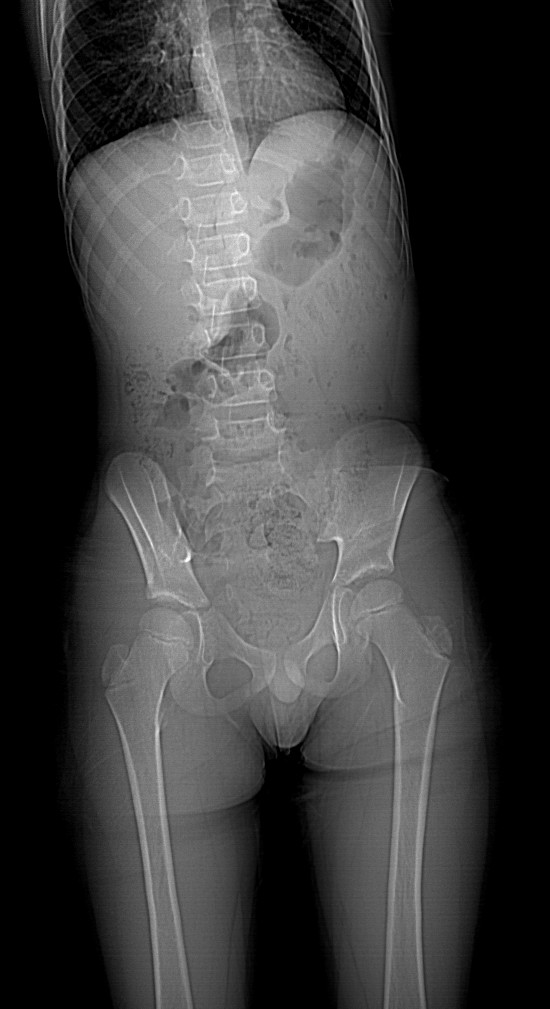
A lucency overlying the lower thoracic vertebral bodies is seen on supine frontal view (cupola sign). On the lateral view, free abdominal air is seen as streaks of anti-dependent air under the diaphragm and upper abdominal wall.


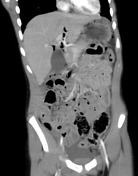

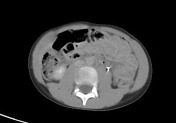

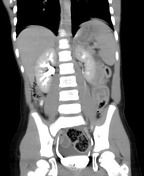

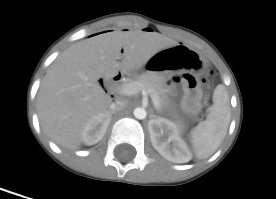
A moderate amount of free abdominal and pelvic high-density fluid indicating hemoperitoneum.
Pneumobilia and intra-abdominal free air, mainly in the right upper quadrant, outlining the falciform ligament (falciform ligament sign) and the fissure for the ligamentum teres (ligamentum teres sign), as well as periportal free gas sign, suggesting duodenal injury.
Proximal small bowel wall thickening and enhancing, indicating shock bowel.
No evidence of hepatic, splenic or pancreatic injury.
Normal appearing kidneys and urinary bladder.
Case Discussion
The boy's bicycle hit an obstacle, causing its handle to impact his abdominal region. Urgent ultrasonography (FAST) showed echogenic free fluid in the pelvis extending upwards into Morison's pouch and intravesical echogenic content. Contrast-enhanced CT depicted hemoperitoneum and pneumobilia with periportal free gas sign, indicating upper GI tract hollow viscus injury.
The on-call surgical team performed laparotomy and confirmed duodenal injury. However, other organs, including the pancreas, appeared intact.




 Unable to process the form. Check for errors and try again.
Unable to process the form. Check for errors and try again.